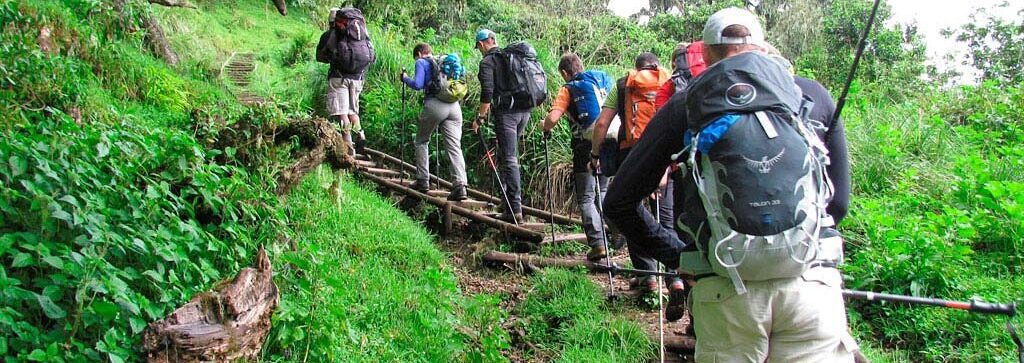Majestic Mount Kilimanjaro Day Hikes Climbing Kilimanjaro most days are not very hard because the trails are not …
The #1 Guide Company for Climbing Kilimanjaro
Embark on an epic adventure with our Guided Kilimanjaro Trek. Conquer Africa's highest peak with expert guides, traversing diverse landscapes for an unforgettable experience. Join us for the ultimate Kilimanjaro hiking. Join us for an unforgettable hiking adventure on Mount Kilimanjaro! Known as “the Roof of Africa” and towering over its surrounding valleys at an astounding elevation of 19,341 feet (5,985m), Kilimanjaro is one of the “7 Summits” of the world!
Guided Kilimanjaro Trek: Explore Majestic Peaks
The Guided Kilimanjaro Trek offers an unforgettable adventure to the summit of Africa’s highest peak. With experienced guides, you’ll journey through lush rainforests, alpine deserts, and glaciers. The trek typically lasts 6-9 days, depending on the route. Popular routes include Machame, Marangu, Lemosho, and Rongai, each offering a unique experience and success rate. Lemosho and Machame are known for the highest success rates from 80% to 90% due to their gradual ascent.
Foot Slopes Tours and Safaris popular Kilimanjaro tour operators and the #1 guide Company for climbing Kilimanjaro offer all-inclusive packages ranging from $1,800 to $3,500, covering permits, guides, porters, meals, and camping or lodge accommodations. Additional costs may apply for gear rental or tipping. Prices vary based on the route, with Machame and Lemosho boasting the highest success rates due to their gradual ascent and increased acclimatization guided Kilimanjaro Trek.
The trek is physically demanding, but with proper preparation, it’s achievable for most. An ultimate guide can help with gear recommendations, training tips, and packing lists, ensuring a successful and unforgettable journey to reach Uhuru Peak, the summit. Best Kilimanjaro Tour Operators reviews highlight the professionalism of guides and the stunning landscapes. Photos often capture breathtaking views of snow-capped peaks and vast savannas. Maps of the routes are available to help plan the adventure. Success rates improve with a longer trek and proper acclimatization, ensuring a safe, exhilarating journey.
Exclusive 6 Days Machame Route: All inclusive Kilimanjaro Hiking Tours Embark on an unforgettable adventure with the 6-Days …
Marangu Route 6 days Itinerary, Prices & Dates Climbing Mount Kilimanjaro via the Marangu route typically takes around …
Discover the 7 Days Machame Route Itinerary Price Experience the ultimate trekking adventure with the 7-Days Machame Route. …
8 Days Mount Kilimanjaro Lemosho Route Embark on an unforgettable adventure with our 8-Day Lemosho Route Mount Kilimanjaro …
Rongai Route 7 days Itinerary, Prices & Dates This route descends down the Marangu route. How hard is …
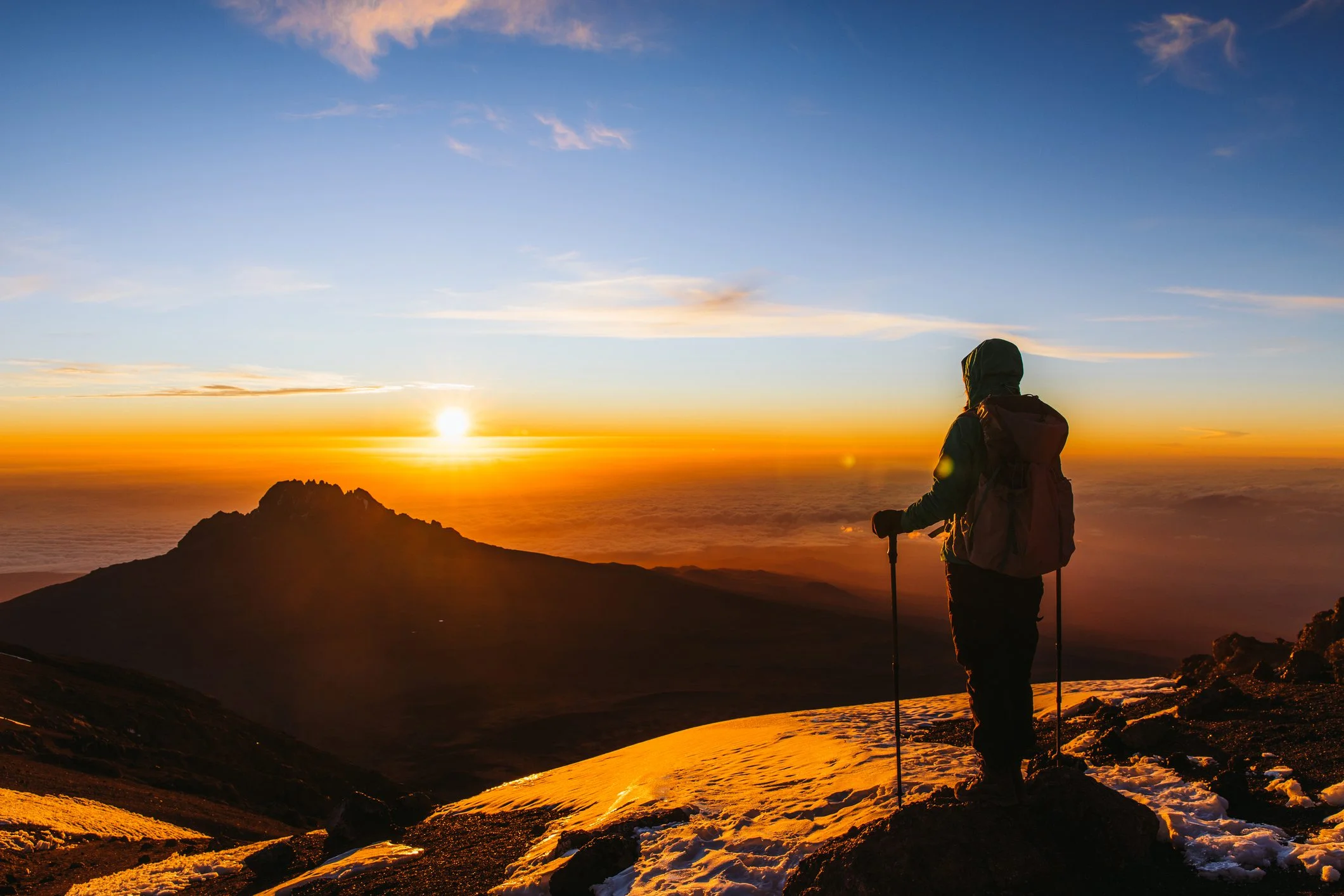
How do I choose a good Kilimanjaro tour operator?
To choose a good Kilimanjaro tour operator, look for certified companies with experienced guides, positive reviews, and good safety records. Ensure they offer proper acclimatization schedules, are transparent about costs, and provide all-inclusive packages, including permits, porters, and meals. Check for ethical practices, like fair wages for porters. A reputable operator should prioritize your safety, offer personalized support, and provide clear communication throughout the planning and trekking process.
How much does it cost to climb Kilimanjaro?
The cost to climb Kilimanjaro typically ranges from $25,80 to $10,500, depending on the route, duration, and tour operator. This usually includes permits, guides, porters, meals, and accommodations. Additional costs may arise for gear rental, tips for staff, and optional services like extra days or private tours. Prices can vary based on the level of service and the specific package chosen, so it’s important to compare offers and ensure transparency in costs.
When is the Best Time to Climb Kilimanjaro?
The best time to climb Kilimanjaro is during the dry seasons, from late June to October and from December to February. These months offer the clearest weather, with less rainfall and better visibility. While the weather is cooler at higher altitudes, conditions are generally more stable, making for a safer and more enjoyable trek. Avoid the rainy seasons (March-May and November) as trails can be slippery and conditions harsher.
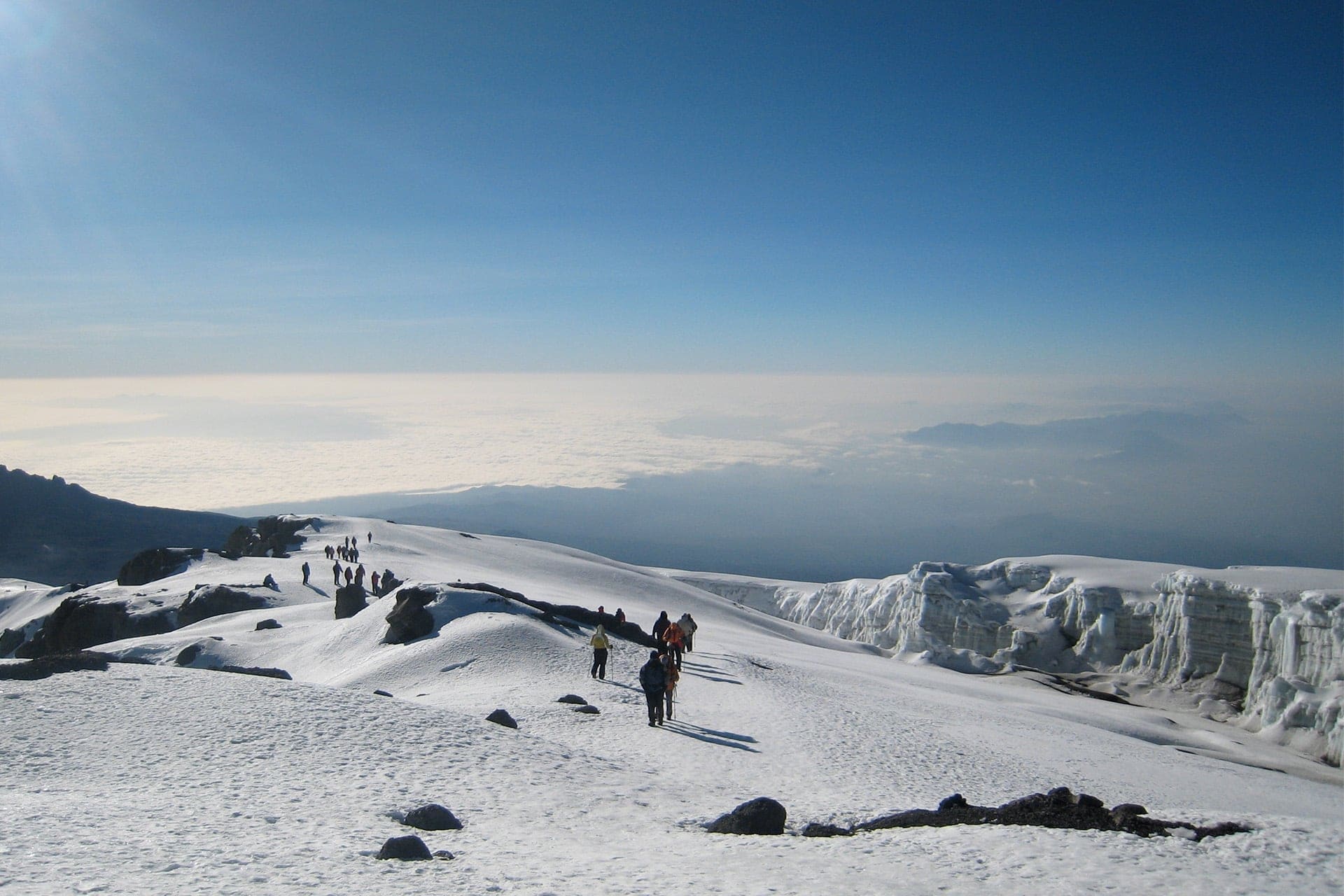
Which is the best route for climbing Kilimanjaro?
The best route for climbing Kilimanjaro depends on your preferences. The Machame Route is popular for its scenic views and higher success rate due to better acclimatization. The Lemosho Route offers a quieter experience with a gradual ascent, also boasting a high success rate. The Marangu Route is easier but more crowded, while the Rongai Route is less trafficked and offers a unique experience. All routes provide a memorable challenge, but Lemosho and Machame are highly recommended for most trekkers.
How Long Does it Take to Climb Mount Kilimanjaro?
Climbing Mount Kilimanjaro typically takes 6 to 9 days, depending on the route chosen. Shorter routes, like the Marangu Route, can be completed in 5-6 days, while longer routes, such as Lemosho or Machame, often take 7-9 days. A longer trek allows for better acclimatization, increasing the chances of reaching the summit safely. It’s important to consider your fitness level and choose a duration that suits your needs for proper rest and altitude adjustment.
What is the weather like on Kilimanjaro?
The weather on Mount Kilimanjaro varies with altitude. At the base, temperatures are warm, ranging from 70°F to 80°F (21°C to 27°C). As you ascend, temperatures drop, especially at higher altitudes, with night temperatures near freezing at the summit. The upper regions experience cold, dry conditions, often with snow or ice near the peak. Weather is most stable during the dry seasons (June-October and December-February), while the rainy season brings heavier showers and cloudier skies.
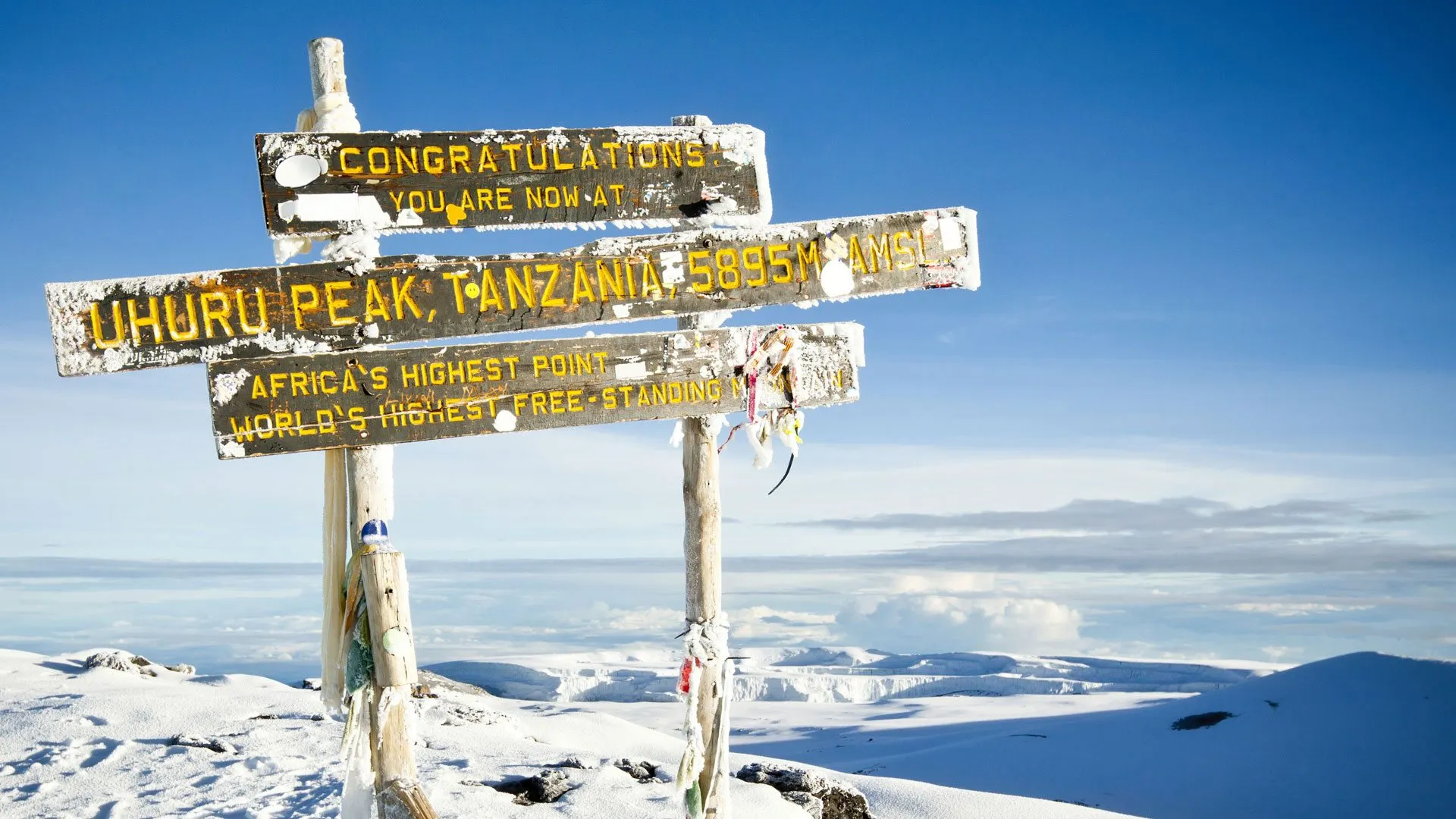
What Gear Do I Need to Climb Kilimanjaro?
To climb Kilimanjaro, you’ll need sturdy hiking boots, layered clothing for varying temperatures, and a waterproof jacket. Essential gear includes a warm sleeping bag, gloves, a hat, sunglasses, a headlamp, and a daypack. A hydration system or water bottles, trekking poles, and sunscreen are also recommended. Don’t forget a first-aid kit, camera, and personal items. Some gear can be rented, but it’s important to ensure everything fits well and is suitable for high-altitude conditions.
How do I train to climb Kilimanjaro?
To train for climbing Kilimanjaro, focus on cardiovascular endurance, strength, and altitude acclimatization. Hike on inclines with a loaded backpack to simulate summit conditions. Build stamina with long treks, and improve leg strength through squats and lunges. Include aerobic exercises like running or cycling. Gradually hike higher altitudes to acclimatize. Stay fit, hydrate well, and practice mental resilience to handle fatigue and discomfort during the climb. Proper gear and rest are essential.
How long do you stay at the summit of Kilimanjaro?
The typical time spent at the summit of Mount Kilimanjaro, Uhuru Peak, is brief, usually around 20 to 30 minutes. Due to the extreme altitude and harsh conditions, climbers are advised to descend quickly after reaching the top to avoid altitude sickness. The summit visit allows for a short celebration, photos, and the chance to take in the panoramic views before descending to lower altitudes for safety and recovery.
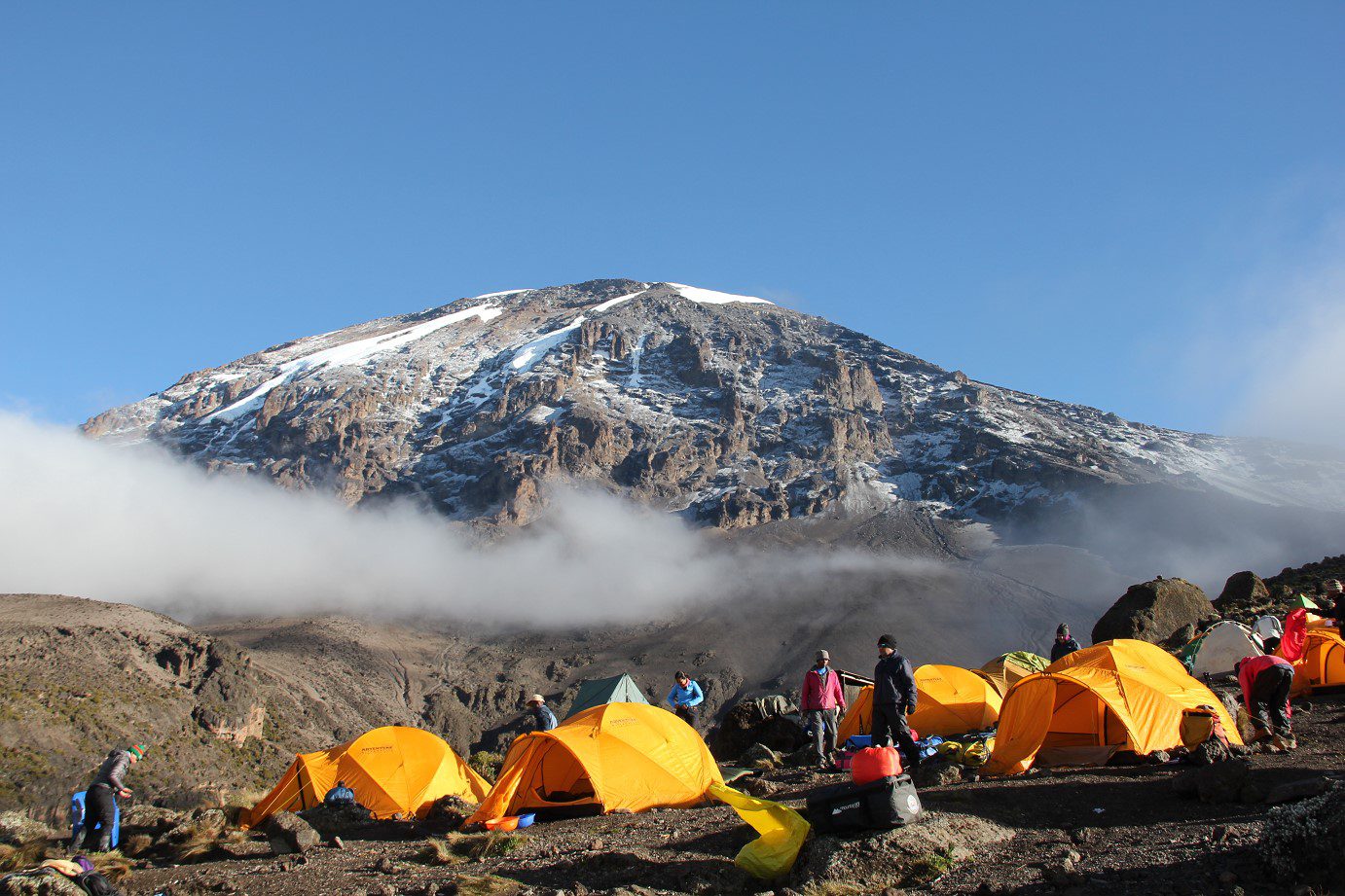
Is climbing Kilimanjaro dangerous?
Climbing Mount Kilimanjaro can be dangerous due to altitude sickness, extreme weather, and physical strain. The high elevation above 5,000 meters increases the risk of altitude-related issues like headaches, nausea, and dizziness. The weather can be unpredictable, with freezing temperatures and storms. While most climbers succeed with proper preparation, training, and guidance, it’s essential to be aware of these risks and respect the mountain’s challenges for a safe ascent.
Why are some Kilimanjaro company’s prices so low?
Some Kilimanjaro companies offer lower prices due to cost-cutting measures like using local, less experienced guides, minimizing accommodations, or offering basic itineraries. They may also avoid additional services like meals or equipment rentals, making their packages seem cheaper. However, these budget options can sometimes compromise safety, quality, and overall experience. It’s important to balance affordability with value when choosing a tour operator for the climb.

Where is Mt Kilimanjaro? Location, Features and Facts
Mount Kilimanjaro is located in northeastern Tanzania, near the border with Kenya. It stands as Africa’s highest peak, reaching 5,895 meters (19,341 feet). This iconic stratovolcano features three volcanic cones: Kibo, Mawenzi, and Shira. Kilimanjaro is renowned for its snow-capped summit, lush rainforests, and diverse ecosystems. A UNESCO World Heritage Site, it attracts climbers worldwide, offering a stunning, challenging ascent. The mountain is also vital for local communities and wildlife.
Mt Kilimanjaro Map: Location, Facts, Routes
Mount Kilimanjaro is located in northeastern Tanzania, close to the Kenyan border. It’s Africa’s highest peak, rising 5,895 meters (19,341 feet). The mountain features several climbing routes, including Marangu, Machame, Lemosho, and Rongai, each offering unique landscapes and challenges. Kilimanjaro’s summit, Uhuru Peak, is renowned for its breathtaking views and snow-capped beauty. A UNESCO World Heritage site, it’s surrounded by diverse ecosystems, from rainforests to alpine deserts, making it a popular destination for adventurers.
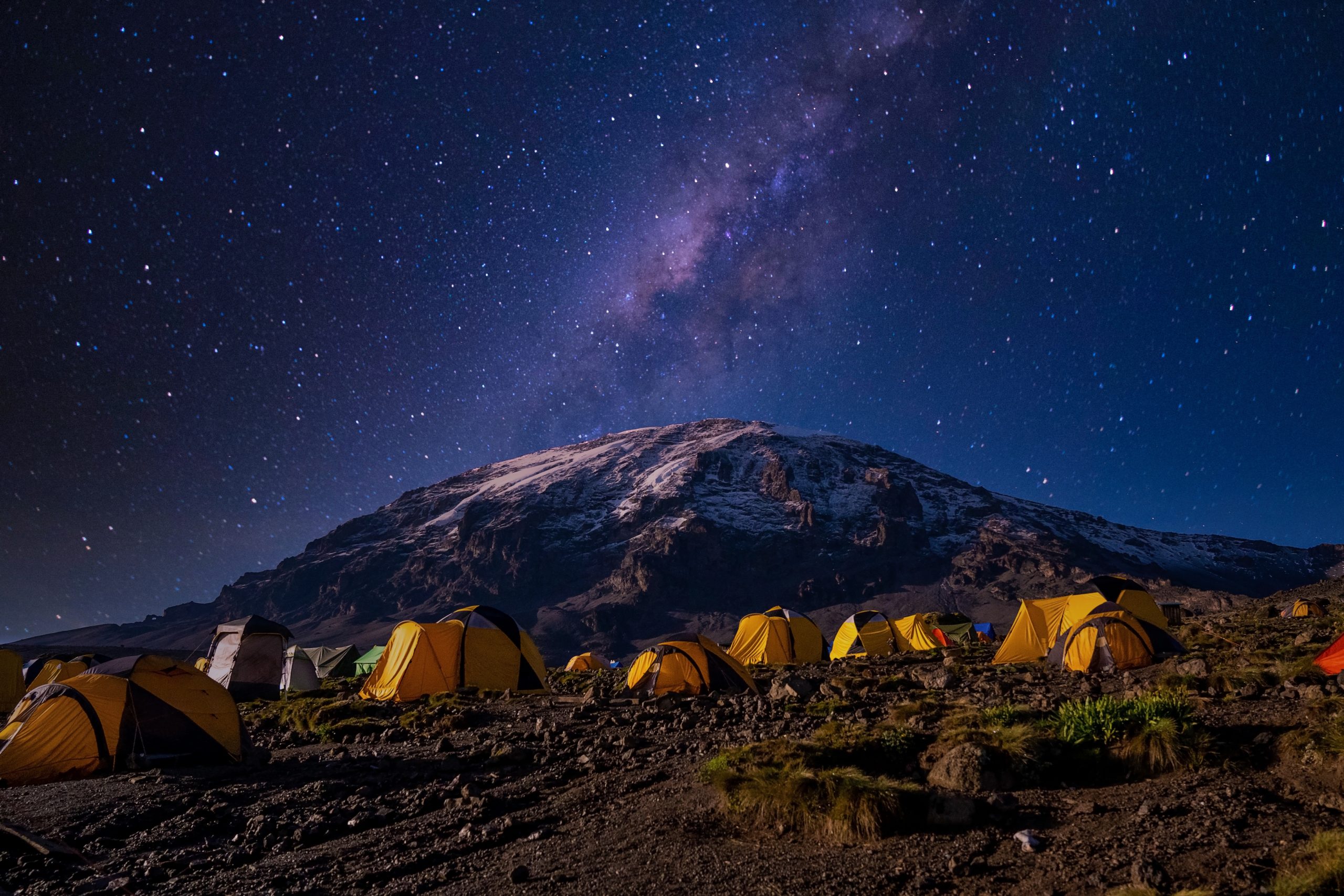
Kilimanjaro Glaciers: Insights into Their Disappearance
Kilimanjaro’s once-majestic glaciers, a crown of ice against the Tanzanian sky, are rapidly vanishing. These frozen relics, vital climate archives, are succumbing to rising temperatures. Their retreat, accelerating in recent decades, paints a stark picture of global warming’s impact. Exposed rock and dwindling ice fields now mark the mountain’s summit, a poignant testament to environmental change. The glaciers’ disappearance not only alters the landscape but also threatens regional water resources and ecosystems, serving as a critical indicator of planetary health.
Mount Kenya vs. Mount Kilimanjaro – Which is Better?
Choosing between Mount Kenya and Mount Kilimanjaro depends on your priorities. Kilimanjaro, Africa’s highest peak, offers a “walkable” ascent, attracting many. Its diverse routes and iconic snow-capped summit are major draws. However, it can be crowded. Mount Kenya, while lower, presents a more technical climb, especially to its highest peaks. Point Lenana, its trekking peak, is more accessible. It offers a more rugged, less crowded experience, with diverse terrain. Mount Kenya tends to be less expensive. Essentially: Kilimanjaro: Higher, popular, less technical. Mount Kenya: More technical options, less crowded, often more affordable.
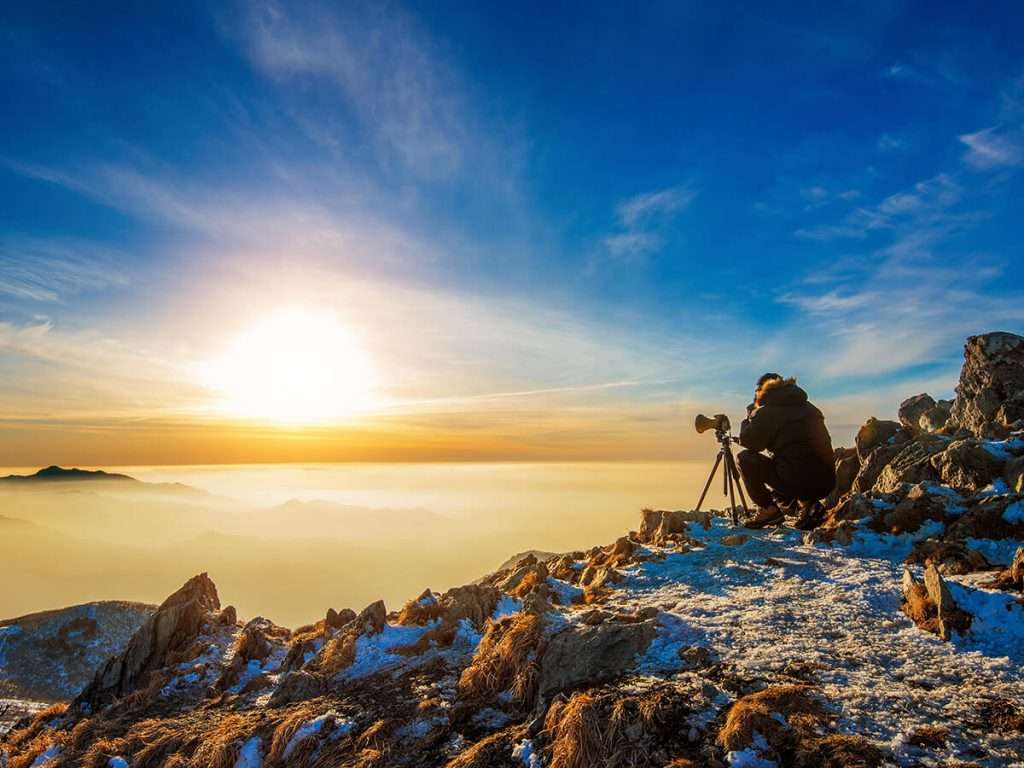
Mount Kenya vs. Mount Kilimanjaro vs Everest Base Camp vs Machu Picchu
Kilimanjaro is a high-altitude trek, accessible to many, with diverse ecosystems. Mount Kenya offers technical climbs and rugged beauty, less crowded. Everest Base Camp is a Himalayan trek, showcasing Sherpa culture and towering peaks. Machu Picchu blends hiking with Inca history, through the Andes. Kilimanjaro focuses on reaching a summit, Kenya on varied climbing, EBC on Himalayan views, and Machu Picchu on cultural exploration. Each offers unique experiences, from altitude challenges to historical immersion.
Machu Picchu vs Mt Everest vs Mt Kiliminjaro
Machu Picchu offers a cultural trek through Andean landscapes, revealing ancient Inca ruins. It’s a journey through history, not extreme altitude. Mount Kilimanjaro is a high-altitude trek, focused on reaching a summit across diverse ecological zones. Mount Everest Base Camp, while not a summit climb, provides a challenging Himalayan trek, showcasing breathtaking peaks and Sherpa culture. Each destination offers distinct experiences: Machu Picchu for cultural immersion, Kilimanjaro for a high-altitude achievement, and Everest Base Camp for iconic mountain views.
Can I Climb Kilimanjaro as a Complete Novice?
Yes, you can climb Kilimanjaro as a novice, but preparation is key. It’s a trek, not a technical climb, so no prior mountaineering experience is needed. However, altitude is a major factor. You’ll need good cardiovascular fitness, gained through consistent training. Choose a longer route for better acclimatization. Hiring experienced guides is crucial; they manage logistics and monitor your health. Mental fortitude is also important, as the climb demands endurance. While achievable for beginners, don’t underestimate the challenge.

